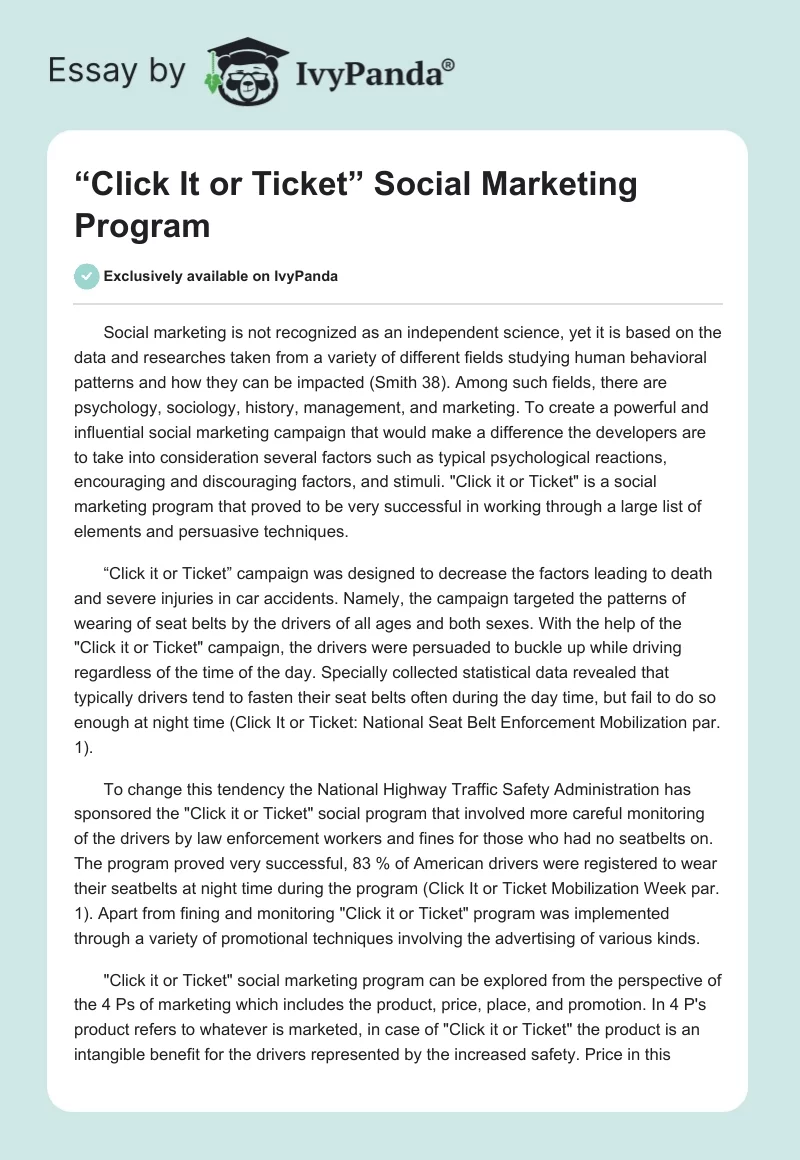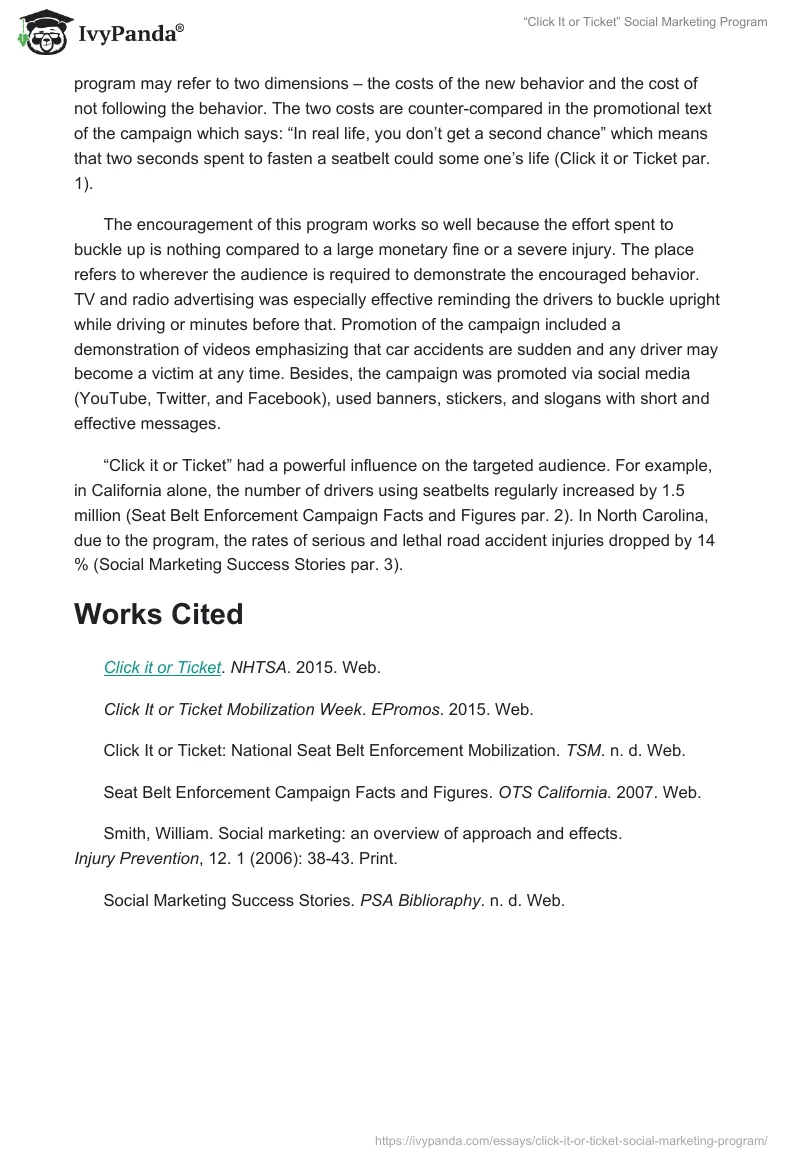Social marketing is not recognized as an independent science, yet it is based on the data and researches taken from a variety of different fields studying human behavioral patterns and how they can be impacted (Smith 38). Among such fields, there are psychology, sociology, history, management, and marketing. To create a powerful and influential social marketing campaign that would make a difference the developers are to take into consideration several factors such as typical psychological reactions, encouraging and discouraging factors, and stimuli. “Click it or Ticket” is a social marketing program that proved to be very successful in working through a large list of elements and persuasive techniques.
“Click it or Ticket” campaign was designed to decrease the factors leading to death and severe injuries in car accidents. Namely, the campaign targeted the patterns of wearing of seat belts by the drivers of all ages and both sexes. With the help of the “Click it or Ticket” campaign, the drivers were persuaded to buckle up while driving regardless of the time of the day. Specially collected statistical data revealed that typically drivers tend to fasten their seat belts often during the day time, but fail to do so enough at night time (Click It or Ticket: National Seat Belt Enforcement Mobilization par. 1).
To change this tendency the National Highway Traffic Safety Administration has sponsored the “Click it or Ticket” social program that involved more careful monitoring of the drivers by law enforcement workers and fines for those who had no seatbelts on. The program proved very successful, 83 % of American drivers were registered to wear their seatbelts at night time during the program (Click It or Ticket Mobilization Week par. 1). Apart from fining and monitoring “Click it or Ticket” program was implemented through a variety of promotional techniques involving the advertising of various kinds.
“Click it or Ticket” social marketing program can be explored from the perspective of the 4 Ps of marketing which includes the product, price, place, and promotion. In 4 P’s product refers to whatever is marketed, in case of “Click it or Ticket” the product is an intangible benefit for the drivers represented by the increased safety. Price in this program may refer to two dimensions – the costs of the new behavior and the cost of not following the behavior. The two costs are counter-compared in the promotional text of the campaign which says: “In real life, you don’t get a second chance” which means that two seconds spent to fasten a seatbelt could some one’s life (Click it or Ticket par. 1).
The encouragement of this program works so well because the effort spent to buckle up is nothing compared to a large monetary fine or a severe injury. The place refers to wherever the audience is required to demonstrate the encouraged behavior. TV and radio advertising was especially effective reminding the drivers to buckle upright while driving or minutes before that. Promotion of the campaign included a demonstration of videos emphasizing that car accidents are sudden and any driver may become a victim at any time. Besides, the campaign was promoted via social media (YouTube, Twitter, and Facebook), used banners, stickers, and slogans with short and effective messages.
“Click it or Ticket” had a powerful influence on the targeted audience. For example, in California alone, the number of drivers using seatbelts regularly increased by 1.5 million (Seat Belt Enforcement Campaign Facts and Figures par. 2). In North Carolina, due to the program, the rates of serious and lethal road accident injuries dropped by 14 % (Social Marketing Success Stories par. 3).
Works Cited
Click it or Ticket. NHTSA. 2015. Web.
Click It or Ticket Mobilization Week. EPromos. 2015. Web.
Click It or Ticket: National Seat Belt Enforcement Mobilization. TSM. n. d. Web.
Seat Belt Enforcement Campaign Facts and Figures. OTS California. 2007. Web.
Smith, William. Social marketing: an overview of approach and effects. Injury Prevention, 12. 1 (2006): 38-43. Print.
Social Marketing Success Stories. PSA Biblioraphy. n. d. Web.


